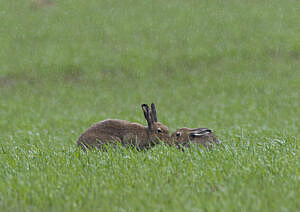At the start of every year, I like to look back over my wildlife highlights of the year just gone. With the final release of Covid restrictions, it’s been a year in which I’ve achieved several personal wildlife goals. I’ve seen and photographed every British butterfly, damselfly, and dragonfly, as well as a third of the British list of birds. I’ve taken 33,000 photographs, travelled uncounted miles, and seen 65 species that I’ve never seen before. So what should be my photo of the year?

Should it be the rare Large tortoiseshell butterfly, naturally returning to our shores after going extinct in the 1970s?
or the Mountain Ringlet butterfly, which completed my question to see and photograph all of Britain’s butterfly species?

What about the stunning black-browed albatross, normally a bird of the Southern oceans, that somehow made the Yorkshire coast its home?

Or the two Irish hares, adult and adolescent kitt, nuzzling inthe rain?

How about the Stoat, posing for a photoshoot in Savernake forest?

Or the normally shy Cetti’s warbler which chose to be loud and proud?

Or perhaps the otter kitts which were so trusting as to share their lives with me for a short time?

In the end, though, I’ve chosen my photo of the year. It’s a small brown bird singing in a bush, and I’ve chosen it for what it represents. It’s a nightingale, whose bubbling, tropical song is so astonsihingly beautiful that it has been the muse of poets and musicians for centuries. This is a creaure that wants needs nothing from us but our absence, and gives us nothing but sheer joy and beauty. It is a red-list endangered bird in Britain, another example of a species faring worse in Britain than elsewhere. Life without nightingales holds no fear for most people, somply because so few people have ever heard one. To see and hear one was, and is, a privilege. And so here it is:





2 comments On My photo of the year, 2022
Love the sentiment and it is a great photo of a nightingale in full song but the stoat wins for me 🙂
Each to their own, Belinda! The stoat was luck, but the nightingale represents something my grandchildren will probably never seen
Comments are closed.